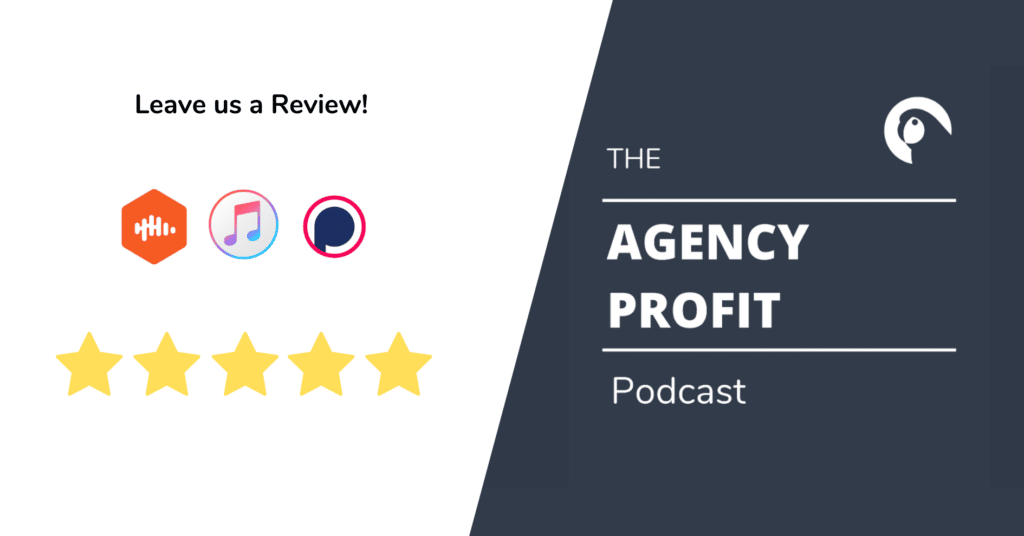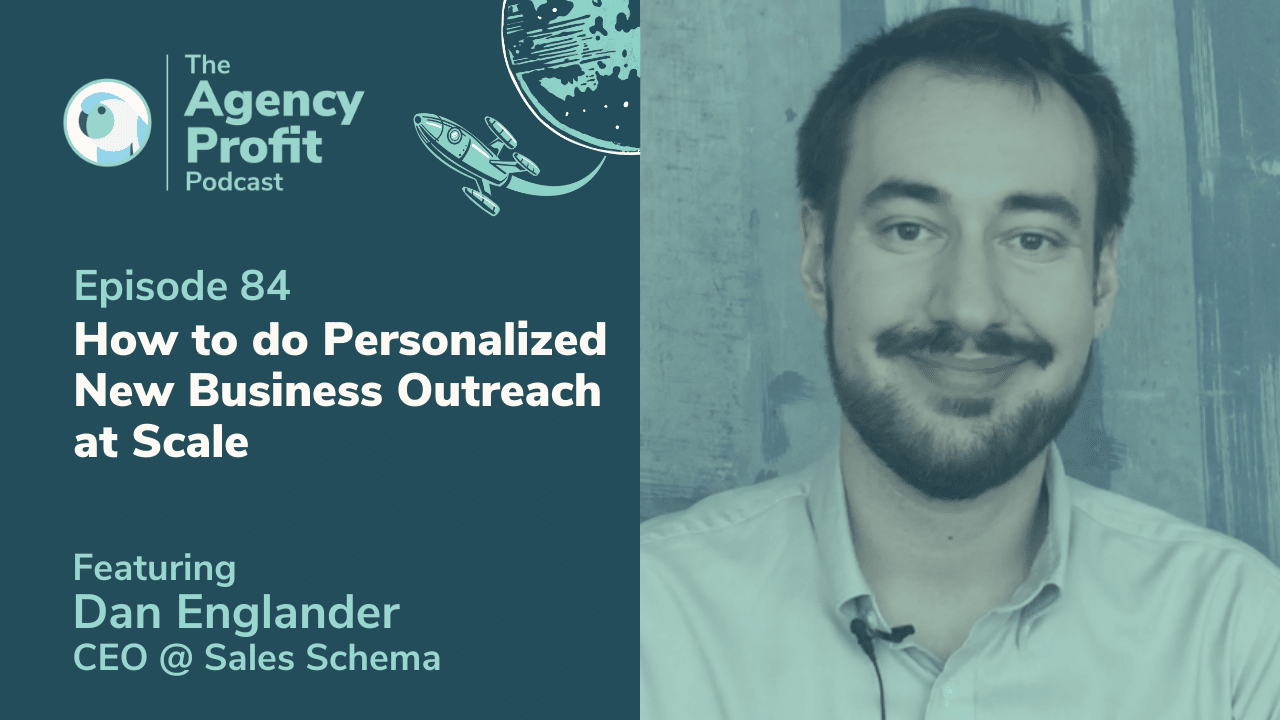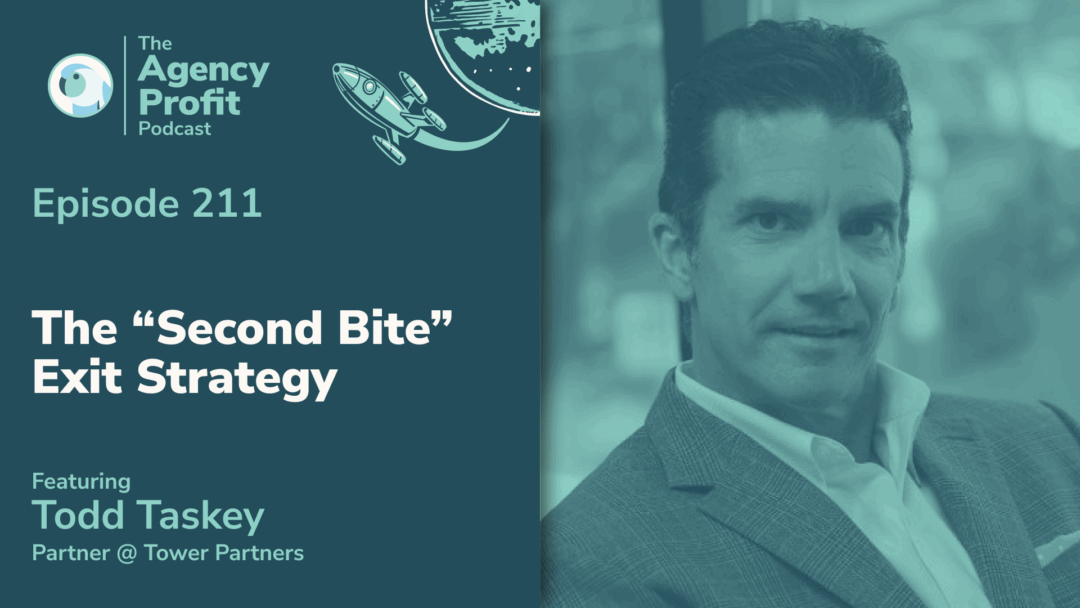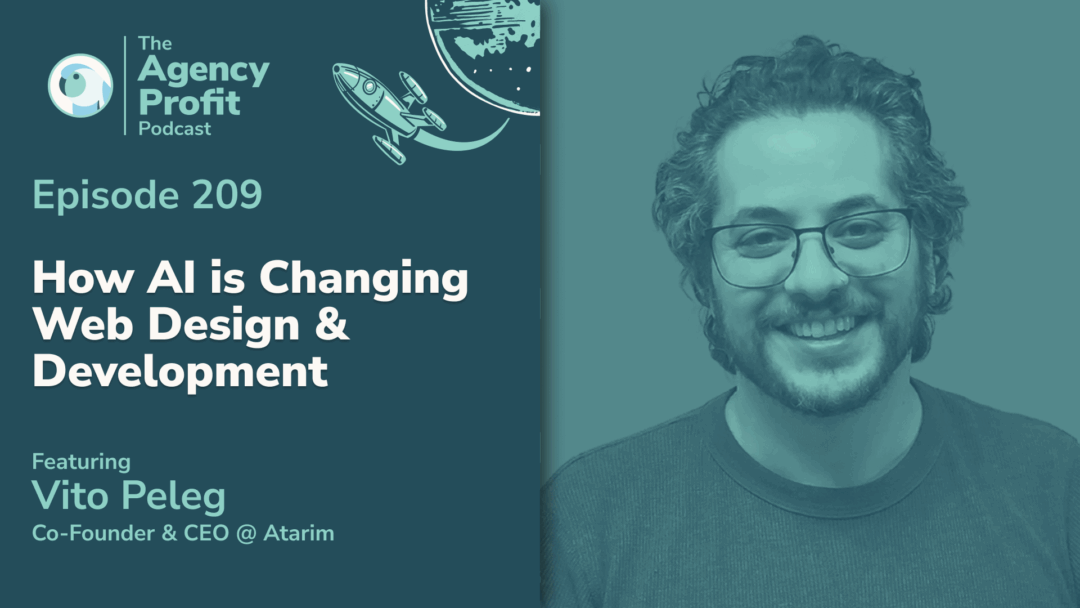This week, our guest is Sales Schema CEO Dan Englander who outlines how to orchestrate new business outreach at scale.
About Dan Englander
Dan is CEO and founder of Sales Schema, a fractional new business team for marketing agencies and B2B service companies. He also hosts the digital agency growth podcast and is the author of a slew of books, including Mastering Account Management, The B2B Sales Blueprint, and a new book in the pipeline entitled Relationship Sales at Scale!
Points of Interest…
- What Dan Does at Sales Schema 1:23
- How to Sell Complex Services 3:24
- De-risking Conversations and Cold Outreach Pitfalls 6:00
- New Business Outreach Scaleable Sweet Spot 9:42
What Dan Does at Sales Schema
As you might be aware; we try not to talk about sales too much on the podcast… Why is that? Well, my POV is that there are already sooo many great sales-related podcasts in existence – Dan’s show being one of them. However, every once in a while, I break the rules, especially when we get access to someone with such a unique take on sales that has tons of value.
In short, I love the way Dan thinks, particularly the balance he strikes between process and soft skills that go hand in hand with making lead generation and new business successful. So, with that, I ask Dan to elaborate on what he and his team do at Sales Schema…
“We’re a fractional new business team. Our core competency has been working with agencies and marketing service companies. I come from the agency space originally – first working on the account side back in the formative days of social media… I then led new business for a creative house, helping them grow to seven figures. Then, I started Sales Schema in late 2014.”
So, what is Sales Schema specializing in? They’re operating in line with a BDR (business development rep), specifically ensuring client pipelines are brimming with meetings – irrespective of how busy they might be! We all know how important it is to have a full pipeline when it comes to agency profitability – that’s #APP 101 right there.
Side note: if you’ve got a process for how you go about defining your scopes for projects, it’s best that you install a regular cadence to review and tweak these numbers based on past performance as time goes on. The Agency Profit Toolkit is a free resource that has meeting templates that you could directly apply to this, among other goodies. Grab your copy below!
How to Sell Complex Services
In essence, what agencies sell can be deemed Complex Services; things you can’t always explain or define outright from the offset, how it’s going to happen, or what it’s going to look like. With that in mind, I ask Dan what’s changing about the way that those things get transacted in the market.
“Markets get mature a lot faster now than they used to, because of the internet, everything going digital, the spread of information, et cetera. When you’re talking about a professional service business you can start and you can deliver with a laptop and an internet connection – that is especially true.”
As Dan points out in the latest book, just because a market becomes mature because there are a lot of other players, that doesn’t equate to it being a bad business move on your part. Rather, it just affects the way in which you market and sell yourself.
While the whole concept of how best to market oneself can seem a mammoth endeavor, Dan and his team focus on getting those meetings for clients – be it between the skeptical decision-maker and a professional service provider.
The question then becomes how best to facilitate this meeting, particularly in an environment where trust is the scarce commodity – not the torrent of info the cautious client feels the need to trawl through before choosing a service provider. ***Dan delves into this concept from 5:31 minutes***
De-risking Conversations and Business Outreach Pitfalls
In the context of a situation where trust is the scarce commodity, not information, how do you de-risk that conversation? Given Dan’s vast experience in this regard, seeing what works and doesn’t work over the course of years, he has this to say…
“It’s more about what is timeless and about building trust through relationships. We have a process we call Relationship Sales at Scale, which revolves around the ethos that the people who are going to take a meeting with you are the ones that are in your sphere of influence.”
Such people in the immediacy include your existing clients. Then there is another layer; the people connected to those people who are akin to your existing clients and therefore more likely to talk with you. This connection de-risks a potential meeting, making it more likely to happen.
“Our whole philosophy is to start with those people, as opposed to doing what almost everyone else is doing and just going cold, trying to optimize for these arbitrary metrics that don’t actually lead to new business.”
Employing cold outreach as a strategy to generate leads and appointments for your business may not be the best use of your energy. What other ways can agencies go awry when attempting to engage clients? What are the key areas in which your outreach process can go awry?
• People wearing the wrong hat. In the initial stages, you have people (usually the owner) doing sales who are not emotionally committed to undertaking that task. They see it more as a temporary position until they hire a dedicated salesperson.
• Hiring a dedicated salesperson prematurely. If you hire somebody that excels at closing deals, they have most likely developed said chops in a supported environment. If you don’t have that support network (incoming leads, effective process) in place already, that’s like hiring a NASCAR driver without a car…
Business Outreach Scaleable Sweet Spot
I want to dig into some of the nuances as it relates to the nebulous intersections that everyone’s trying to strike when considering cold outreach. What is that sweet spot where it’s scalable, efficient, cost-effective, and doesn’t require someone with an MBA? How can you strike that balance between bolstering your client lists in a way that’s not entirely impersonal?
*** Dan provides an example of this by way of a Healthcare client case study from 10:42 minutes *** which I strongly invite you to listen to for context for the following points:
- Don’t go straight for the obvious “Hey, we’re an awesome agency, look at all of our case studies, our amazing funnel which we’re going to insert you into, let’s hook up on LinkedIn!” Instead, find a familiar connection. In Dan’s case study; his healthcare client was originally from Australia. Therefore, he focussed on a referral list including people with common connections to his homeland.
- Take a step back to see everyone in your orbit. Taking Dunbar’s Number (the theory that there’s a “cognitive limit on human groups” amounting to 150 individuals) as an example; Dan surmises that it’s always possible to expand your orbit of influence based on personal commonalities.
- Reach out with said personal commonalities. It can be as simple as penning an email expressing an interest in connecting based on this specific connection. You’d be surprised just how few of these tailored communications even huge global companies have received.
If you’re reading/listening and thinking “Okay, how do I do that?” start thinking about this on a simple level. For instance; perhaps you attended a trade show last year. Locate the companies that exhibited there and pinpoint the ones that happen to be in your backyard. Reach out emphasizing that you have a list of companies you want to do business with. That’s your commonality launchpad!
One of the most common campaigns that Dan undertakes is basically finding the client’s mutual connections to the people they ultimately want to talk to. Then using that strong degree of personalization as a way in.
Key Takeaway…
The key items to consider when starting to optimize your new business outreach at scale include:
- Figure out who’s doing what and then count the cost of it. For example, if you’re an agency owner currently sporting all the hats, ensure you block off the necessary sales time. Additionally, know what it’s going to entail.
- Work your pipeline from bottom to top. Obviously, prioritize further down the pipeline. Then focus on the people higher up from there – once they’ve actually made it to a stage of interest.
- Don’t overthink it. Just decipher your optimum clients; who are most likely to buy from you/who are the people who you are most likely to help.
- Focus on those who are in your circles of influence.
Essentially, it all comes down to trust. All the things we think matter – like our portfolio, pitch, our positioning – they’re all peripheral to one fundamental thing. How to convey to clients that they can trust you to help them attain their desired outcome!
The fastest way to build trust is to leverage the trust that’s already existing in another relationship. Also, you need to think outside the proverbial box just a little bit. Scoot to the 17:55 minute mark of the video*** to hear how @Parakeeto initially reached out to potential clients.
See more from Dan…
- Stream Relationship-Driven New Business at Scale video via SalesSchema.com/relationships
- Dan@SalesSchema.com
- Dan’s LinkedIn @danenglander
- Sales Schema LinkedIn @Sales-Schema
Did you learn anything new from this episode? Let us know in the comments below! We have helpful blogs designed to bolster your agency profitability, such as How To Calculate Your Billable Employee Cost-Per-Hour.
Our next installment of #APP, on April 20th, will see Marcel chat with Tim Kilroy. Our previous blog – Episode 83 with Taylor McMaster – can be viewed here…
Avid #APP Listener?!
We would be eternally grateful if you could leave us a review…

Agency Profitability Tool Kit
If you’re looking for more resources to help you improve your agency’s profitability, check out the Agency Profitability Tool Kit. It’s full of templates and checklists used when consulting clients. This helps them improve profitability by over 100% in under 60 days.








0 Comments